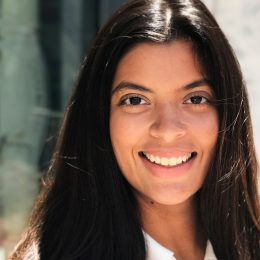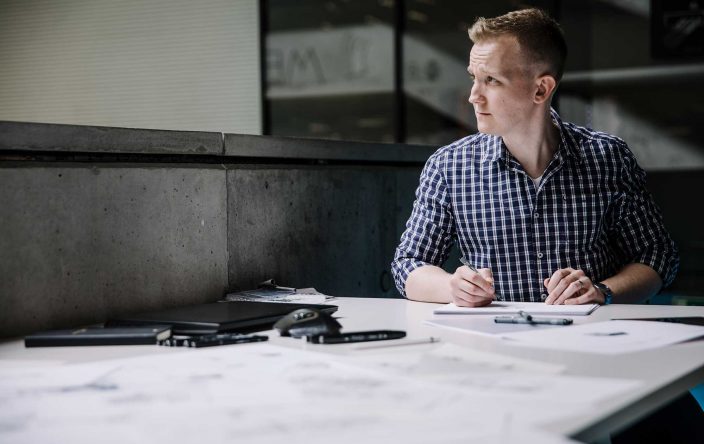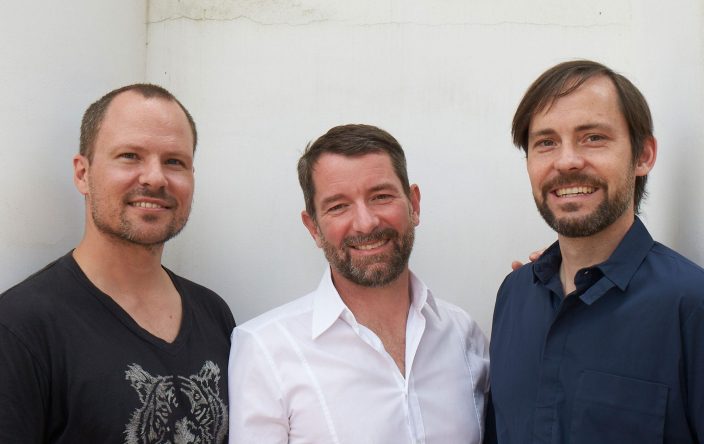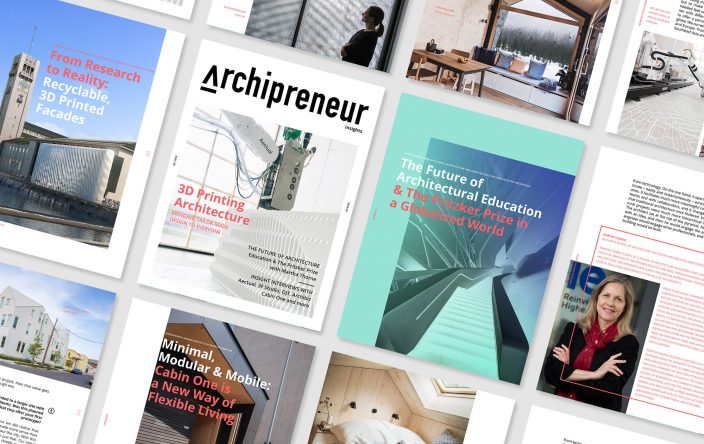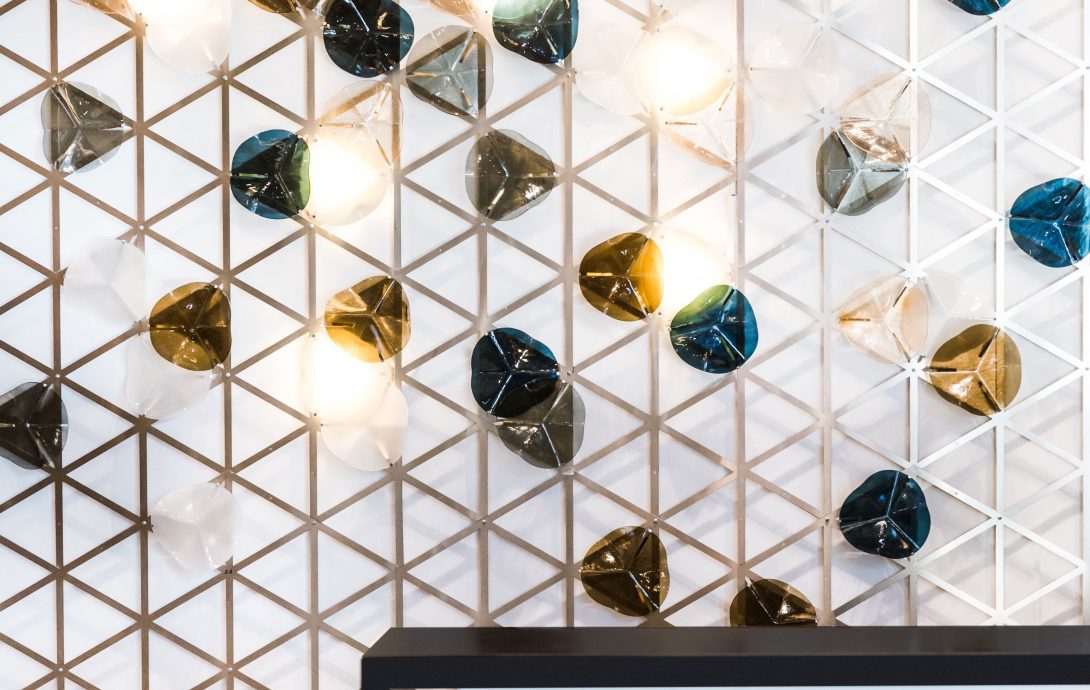
Traditional Crafts In the Digital Age: Dazzling Artworks by Atelier MEL
Atelier MEL is devoted to the creation of unique artworks at the intersection of artistry and digital design technology. Based in Spain, Maria Ruiz Pardo leads a talented team of digital designers, engineers, architects and artisans to collaborate on installations showcasing traditional artisanship and the potential of cutting edge design and fabrication tools.
In its beginnings, Atelier MEL embarked on a deep study of artisan glass techniques to create a set of modular collections of three dimensional illuminated mosaics. This was the first step towards developing conceptualizing, designing and building customized art pieces in a great variety of different materials.
As pioneers of parametric design, Atelier MEL have created design tools which make it easier to work with interior designers and architects and shorten the process chain that can link a complex art concept to its materialization. This has allowed them to reach new heights of creativity, efficiency, and quality.
Could you tell us a little about your background?
I have an architecture and design background, having completed my studies in architecture in 2008. I worked while in university and continued working as an architect for several years after I graduated, but the economic situation in Spain became very difficult. Despite having a good job, the prospects for growth weren’t encouraging.
That was my reason for starting a Master in Architectural Management and Design at IE School of Architecture and Design with a focus on marketing and business administration. The program was targeted at architects and design professionals in order bridge the gap between business and design, and I was enrolled in their founding year. The program was mainly online and partially in Madrid and one month in London.
It was a good opportunity to meet professionals from all around the world. There were fellow students from the US, Mexico, Spain and Germany which I found really enriching. Before the Masters program, I really lacked business knowledge because we weren’t taught anything about business in architecture school. In business school, I learned how some of the architecture studios I had worked for were run inefficiently, and I would talk with a very good friend about doing something together someday. That was the start of Atelier MEL, almost five years ago already.
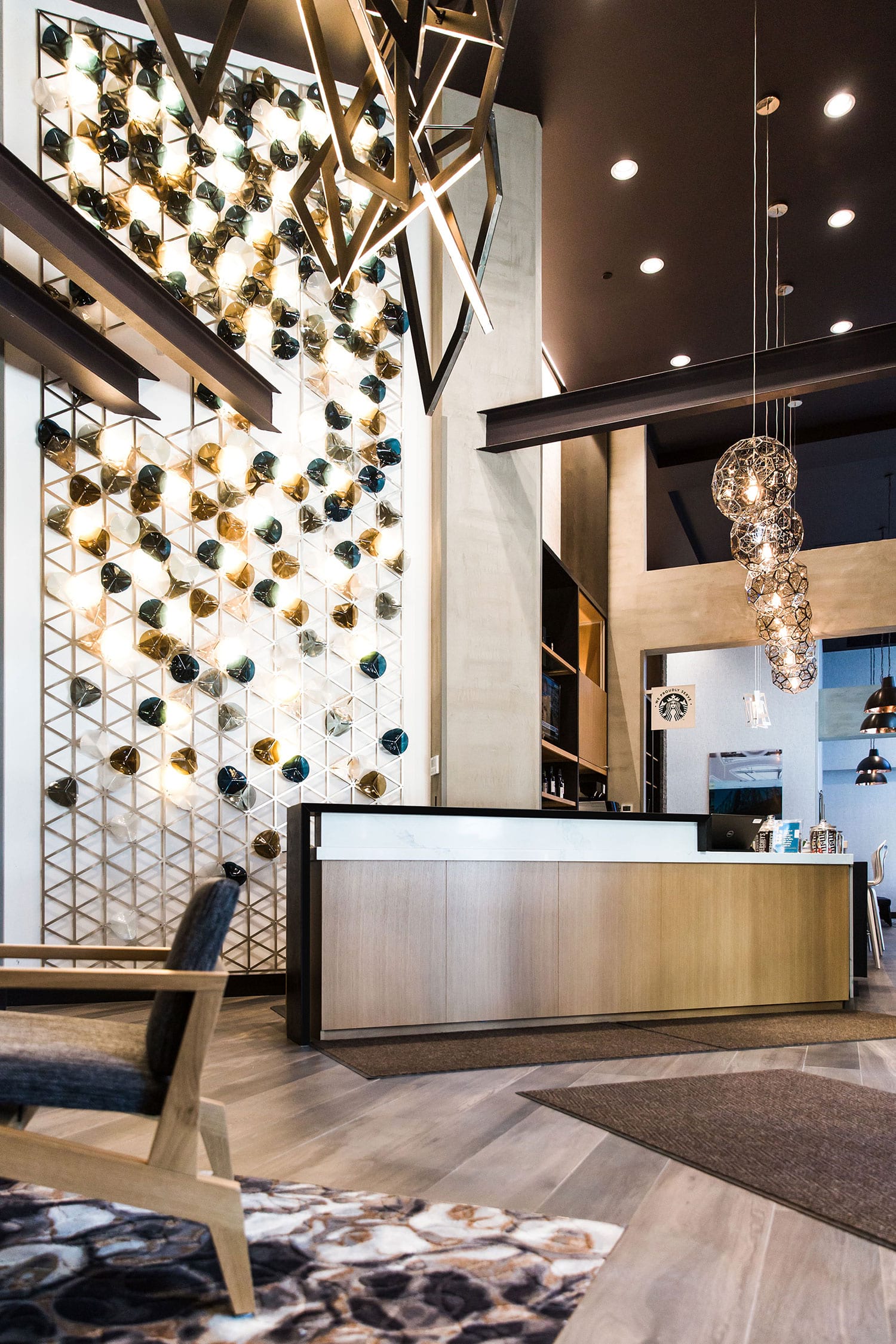
Were you always interested in creating an architectural product? Are you still practicing traditional architecture next to running your own company?
I never really made a conscious decision to create an architectural product, but I was always more interested in small-scale projects mainly because of the speed.
When I worked for architecture offices on huge projects like hospitals or high-rise buildings, I rarely saw a project from start to finish because the duration of the project cycles was so long. Since I preferred small-scale projects, and I was also really interested in lighting when I was working as an architect, the transition into this field of products felt natural.
Geometry and architectural drawing were also my favorite subjects in university, and these are essential skills for product design. Product design typically involves working with much more complex shapes than architecture, and it can train your brain geometrically, which I really enjoy.
How did you come up with the idea of creating artistic glass lighting modules and create the company Atelier MEL from this?
I was always working on the design side of architecture, and I had a really good friend with a consulting company for architects and engineers. We often talked about the idea of working together, but I always felt I needed to work closly to the design itself, not as an consultant.
One day, we saw an opportunity. One of our mutual friends owns a glass workshop in Cartagena. We visited and saw skilled glass artisans who were our age working in a very traditional craft in the traditional way. They were repeating what their great grandfathers had been doing for decades. They weren’t innovating and they were struggling to sell the products they produced.
Roberto, my friend, had a company specializing in high-end technologies of digital production and parametric design. Seeing these glass craftspeople who are really well trained but struggled with their product and market fit, as a designer I felt uniquely positioned with the ability to connect technology with craft. Since I am really interested in crafts and also working in small scale, Roberto and I saw an opportunity to work together with the skills and experience of his company.
The idea was to combine these two things together, with me as designer and manager working together with Roberto’s team. We said, “Let’s try it, let’s get crazy,” because it was a really crazy idea. We literally had no experience in the product design process and no experience at all in lighting design, as well as very little experience in glass craft, but that was a thing we could learn from our friends.
This is how we founded Atelier MEL. Today, we produce a wide range of products and sculptures made of glass and other materials. We recently introduced dynamic lighting, which enables us to do dynamic lightning installations.

That is very inspiring. Can you tell us more about the process of creating your first glass product from scratch? What steps did you take?
In the beginning we traveled to the workshop in Cartagena. This was in the second week after our first brainstorming session. I had read a bit about glass production techniques before and when I arrived there, I started asking the craftsmen “How do you do this?” and “How do you do that?” The craftsmen recently confessed that they thought that I was crazy, wondering “Why does this woman want to know all these things?”
I wanted to learn what we were able to do with the material. We knew from the beginning that we had to target the high-end market with our glass products, since glass is an expensive material which is hard to produce at a low cost due to the hand-made fabrication process. I wanted to understand its potential.
I wanted to learn what we were able to do with the
material… I wanted to understand its potential.
From the outset our idea was to produce something modular, like a jigsaw puzzle, that each architect or interior designer could adapt to their project. We started designing and prototyping and we launched two modular collections called DUNA and LOTO. The DUNA system is composed by softly curved rounded glass pieces assembled following a triangular pattern. The LOTO system is composed by flower-shaped glass pieces assembled on a square grid.
We were really lucky that the first products were successful quite early, which allowed us to continue pursuing new products and projects. Today we have built up a portfolio of many different products.
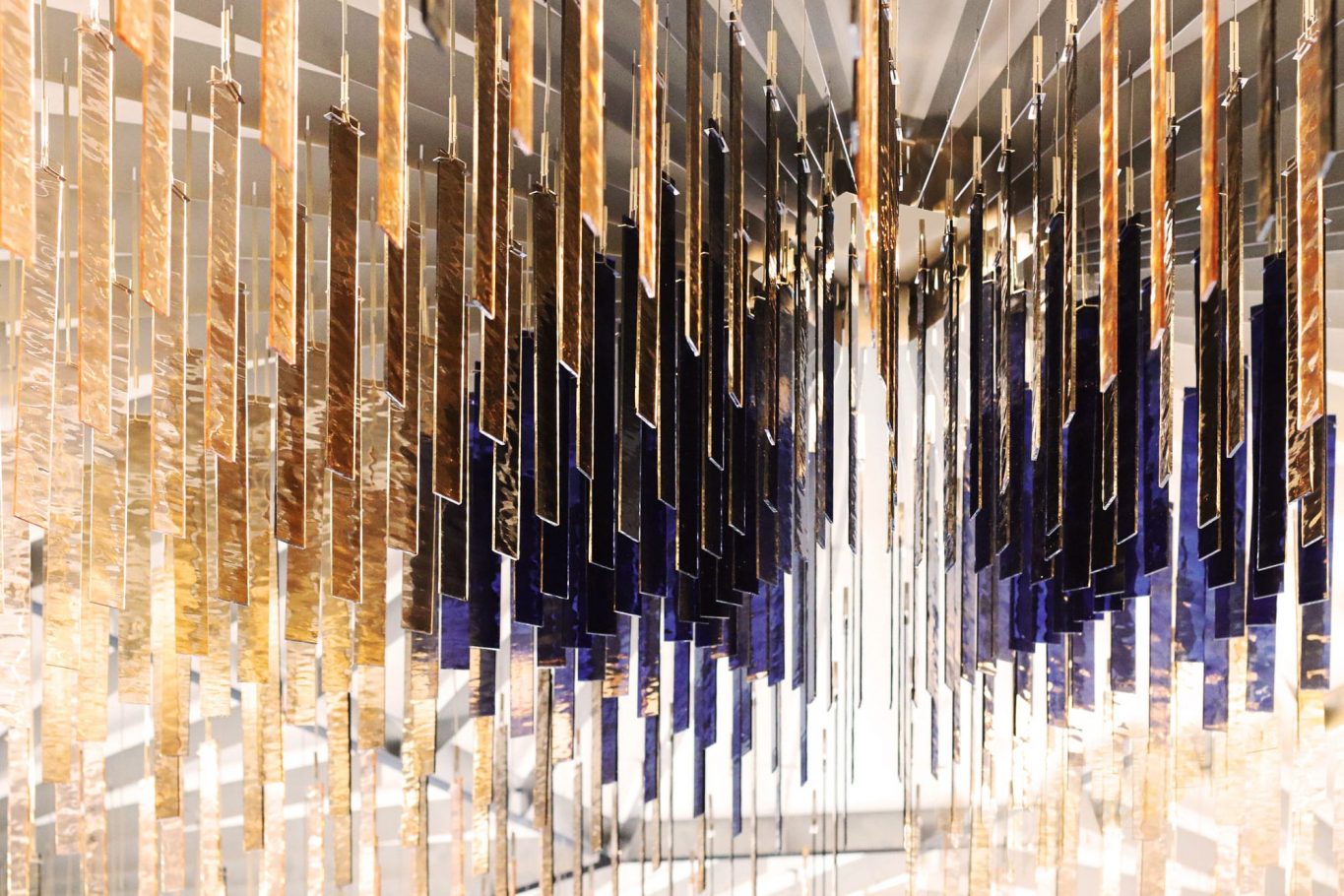
How did you go about finding clients at first?
The first thing we did was that we subscribed to a design competition for young designers of “Maison et Objet”, the large trade show in Paris. It was not a win-or-lose competition, but young designers could be selected for a free fair stand at the show, and we were selected with our first DUNA and LOTO designs. We got a fair space at the young designer’s corner which was sponsored by the trade show itself, and we displayed our first product selection and showed our work which got us some attention.
Looking back, the young designer’s corner was not the best place for us to exhibit, because we have a high-end product and didn’t reach our target audience there. We should have been in the luxury section of the fair, but of course we couldn’t afford this at that time.
During this time Roberto, my business partner, was already working with consultant clients in Doha, Qatar. He had some knowledge about the market, which is open to very exclusive products. That is way we developed a strategy to target the middle east market with our first products.
I also started to travel to the Middle East, without knowing anyone, knocking on doors and presenting our first designs. At some point I got to know the owners of a famous shop for modern furniture in Doha. They were interested and bought a LOTO installation. That was our first sale.
Who are your target customers today and what projects are you working on mainly?
The hospitality industry is our core market. We do a lot of work for exclusive hotels, like four and five-star hotels and also for restaurants. We also work for private clients with residential projects a lot.
Retail shops are a growing field, too. Lately, we have done quite a lot of work for company headquarters, like an installation for a pharmaceutic company headquarter in India or another lightning installation for a new bank in Qatar.
Each of our light installations is unique since the cost of the designs are quite high.

How did you develop your acquisition strategy and process? What have been the challenges and how do you reach your target customers today?
In the beginning we started replicating the sales approach of Roberto’s consulting business: literally going door-to-door visiting clients and presenting our products to them. But that turned out not to be very successful because our clients are spread around the world. Since our installations are quite exclusive, the decision process is typically long and clients are usually not repeat customers within a short time span. Clients won’t buy one piece per month — they might buy one piece per year — so we need a lot of clients to keep the business running.
Today, we acquire most of our clients from social networks like Pinterest and Instagram
At one point, almost by chance, we were getting published in the press by the American Interior Design magazine. This was a huge boost for our success in the in the US. We had never travelled to the US for sales before that article, but we sold ten projects from that single article. That was a lucky break and it opened the US market for us, which nowadays is our most successful market.
Today, we acquire most of our clients from social networks like Pinterest and Instagram. We have an in-house team member dedicated to social media marketing and social networks. 90% of the time we are contacted by architects, interior architects or designers who discover our work through these channels and who want to implement our products into their projects. They will specify our product or recommend us to their clients, but then we wait until the day the construction is finished because our product is the last piece to be bought and installed. This time gap is very long, and for a young company with a small team it can be very difficult to manage this from a cash-flow perspective.
That is why we have started to work with art consultants recently. This isn’t a common job profile in Spain at all, but it is quite popular in the United States and in China, and it is becoming more common in the Middle East and in the UK. It benefits us to connect with art consultants because they are typically involved only in the last phase of construction for a project. An art consultant would receive concepts from interior designers and look for artists, firms or products to realize these concepts.
This is ideal for us, because we love the challenge of turning concepts into a real object. Since we have a modular product collection, we are able to solve complex shapes and geometries. We are able to offer a very wide variety of options in a very short time.
These skills are not so common among interior designers; perhaps it’s a little bit more with architects. Interior designers usually struggle to work with complex shapes, so we partner with help them to improve the concept. It is a win-win relationship because we enjoy that process and they are very happy to have our help elevating their concept and bringing it to life.

How much does an Atelier MEL installation usually cost?
A small installation usually starts at €3,000. The most expensive installation we have ever sold was around €300,000. This was a huge installation for a big hotel.
What is your future plan with Atelier MEL. How would you like to develop the company?
Since we are all designers and architects, we are likely to focus on the design and service side of our business. We cannot be so competitive on the production side, because we are a new firm and there are huge competitors in the lamp and furniture market. Our whole fabrication process is carried out in Spain currently.
We are at a point where we could choose to develop the venture more into a product company or more into a service company, and we find it more comfortable to strengthen our profile as a service company. That is why we are focusing more on doing unique artworks and installations of any type since this is our core strength.
We call this section of our business “Bespoke Designs” as you can see on our website. The projects are usually large and unique. They are a lot of fun because it’s always a new challenge which we start from scratch. We do a wide variety of different projects within this field.
The second part of our company is called the Modular Collection. These are modular glass products which are already pre-designed and can be produced in a couple of weeks. If we wanted to grow our business on the Modular Collection side, we would need to build a factory with our own production. A factory could speed up the production process and would also let us store material, but considerable investment would be required to build this into a holistic product company.
It is leaner for us to develop our service arm and outsource production. However, we are starting to talk to potential partners like large lighting companies who could take our modular collection into production. Our clients would then be able to use the digital composer to design their own shapes, select colors and their location and place an order. We think this could work well with the right partners, but you never know, perhaps in a couple of years we will manage the production ourselves. For now, we are focusing on the service side.
Do you have any advice for Archipreneurs who are interested in starting their own company in the built environment?
Oftentimes we limit ourselves. Try to develop an attitude of thinking and believing that when you are brave, and you persevere, you can reach much further than what you would initially expect.
Surround yourself with those who complement you and those who can help make a project grow. The team is much more important than the idea, as the team is who is going to do the difficult part of implementing the idea.
In the beginning of our startup I really trusted my friend when he encouraged me to start this venture with him.
I couldn’t imagine that we would find clients in Doha without knowing anybody there. I thought this was impossible, but now we are in Doha, and we have even sold a lamp to the queen, the Sheikh. Nothing is impossible. Be brave.
Surround yourself with those who complement you and those who can help make a project grow. The team is much more important than the idea
What are your thoughts on the future of the built environment? How can it improve, and what continues to inspire you?
I would say is that the future is absolutely based on technology. We should all embrace it and start changing our brains to be much more parametric, much more systematized, much more efficient. In the beginning of my career I was the typical architect, much more interested on the design side of architecture than on the technical side of architecture.
By working together with this team of consultants, I really learned how powerful you can become as a designer mastering the use of technology. Before I considered design and technology as two different things, but now I see how powerful they are in combination.
About Maria Ruiz Pardo
Director at Atelier MEL
After earning her architecture degree in Barcelona, Maria Ruiz Pardo practiced in Spanish studios for several years before pivoting to pursue a career in product design and business management.
After earning a Master in Architectural Management and Design at IE School of Architecture and Design in Madrid and the Royal College of Art in London, Maria founded Atelier MEL in 2013 where she works as director and lead designer.
At Atelier MEL, Maria has assembled a multidisciplinary team of design professionals who work at the intersection of artistry and digital design technology to create exclusive art installations.
Based in Barcelona and Cartagena, Atelier MEL are now developing projects which juxtapose cutting-edge design tools with a rich understanding of traditional craftsmanship worldwide.
Join our Newsletter
Get our best content on Architecture, Creative Strategies and Business. Delivered each week for free.

JOIN THE
ARCHIPRENEUR ACADEMY
- 9 Stage Studio Growth Roadmap
- Library of In-Depth Courses
- Checklists and Workbooks
- Quick Tips and Tutorials
- A Supportive Online Community



